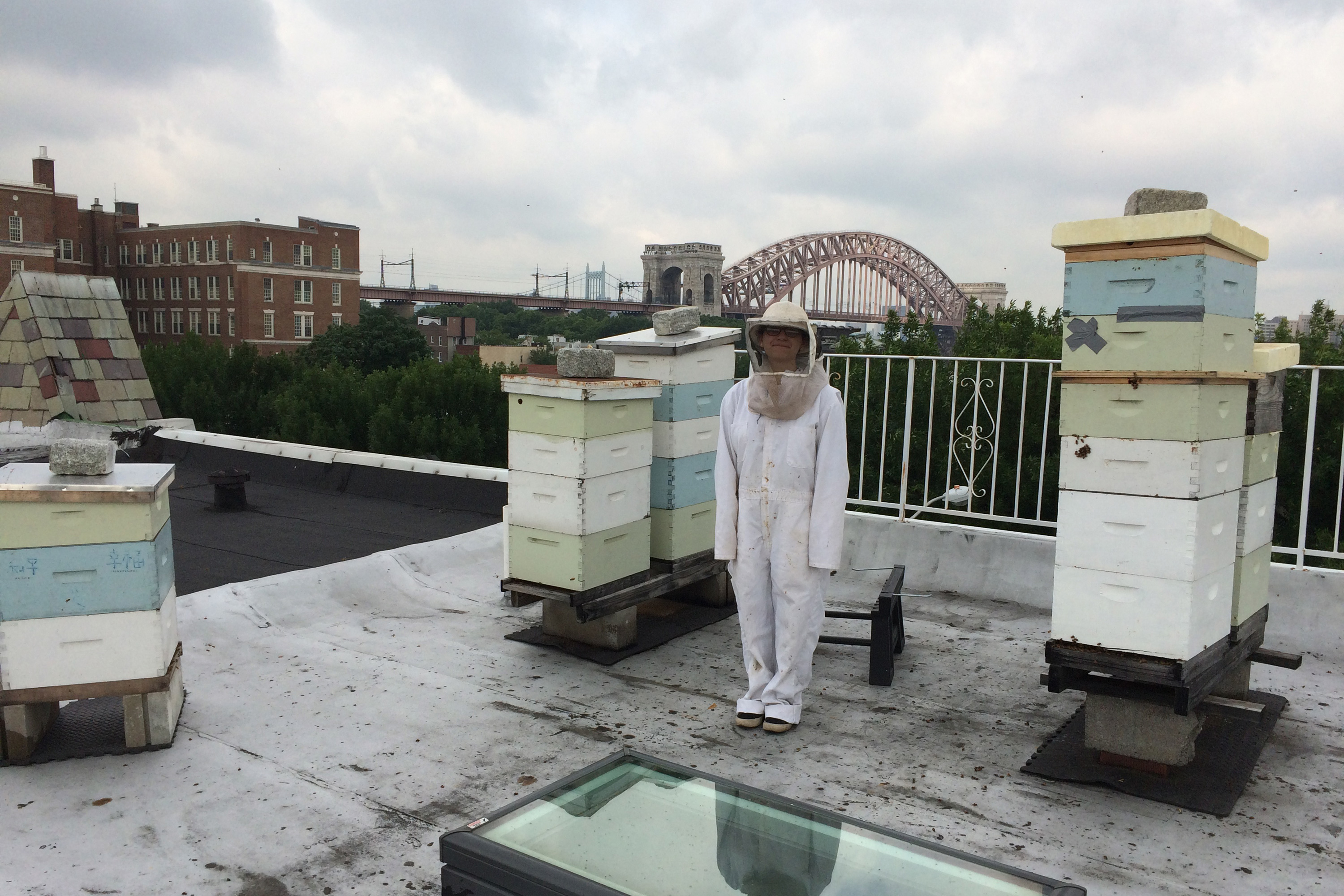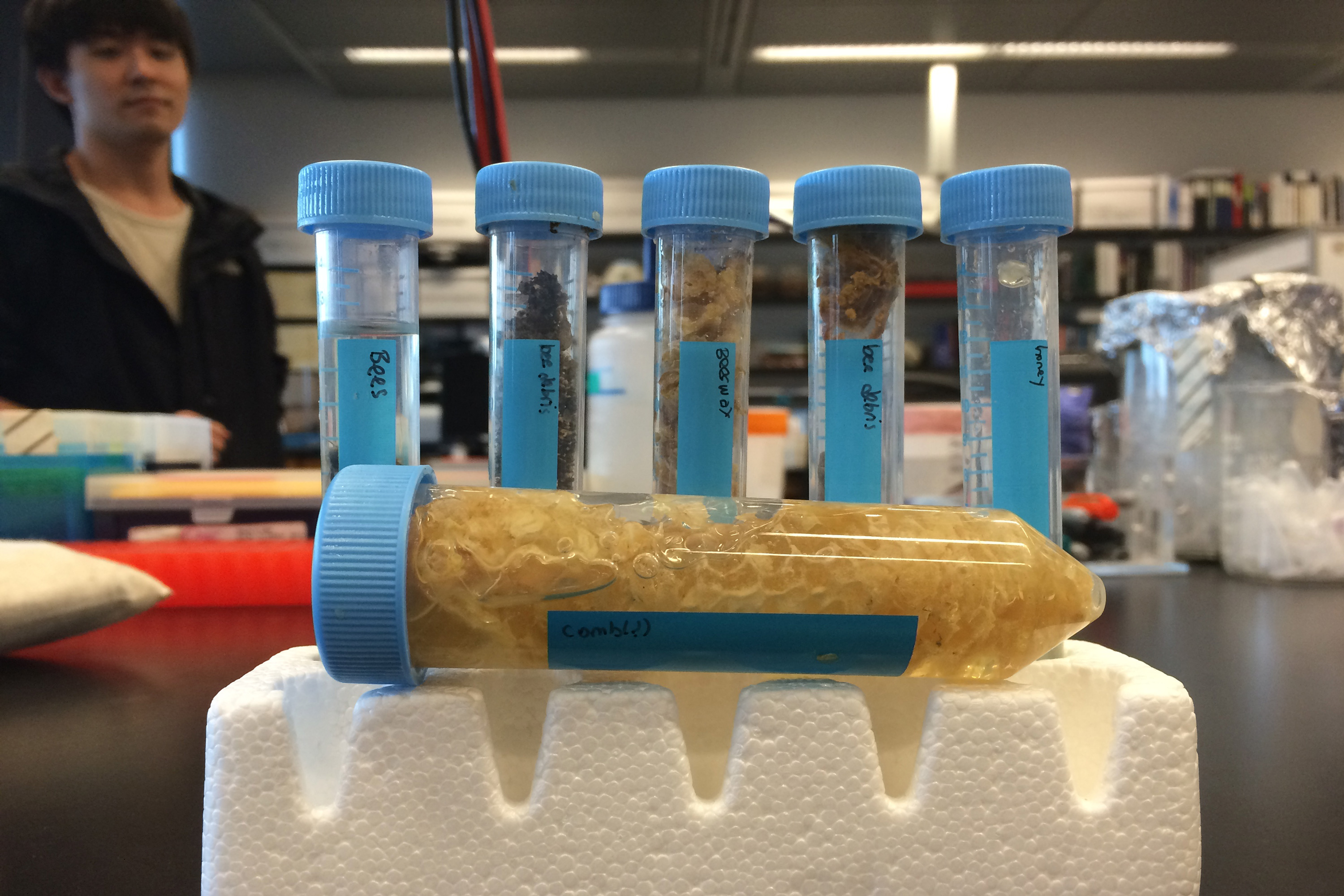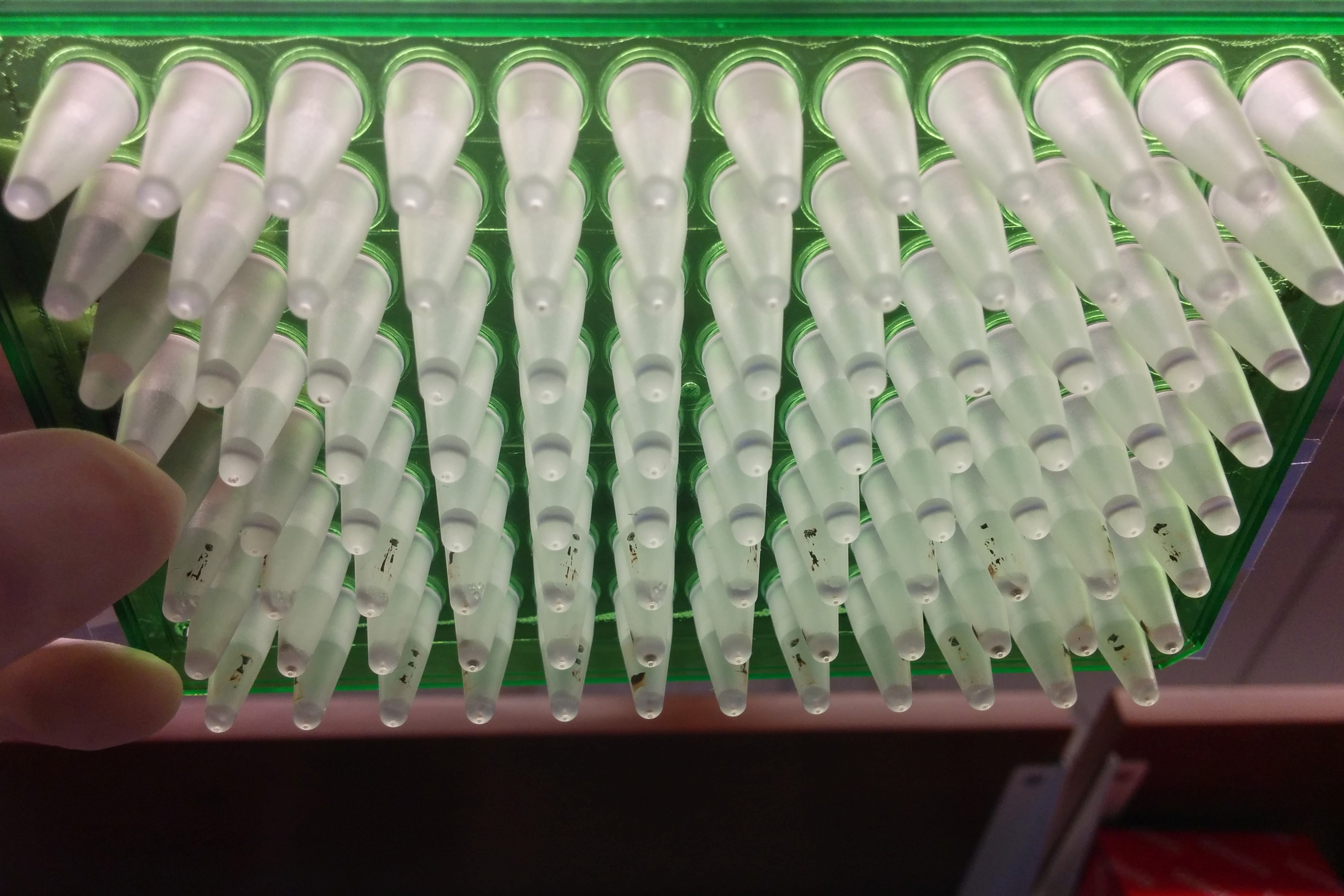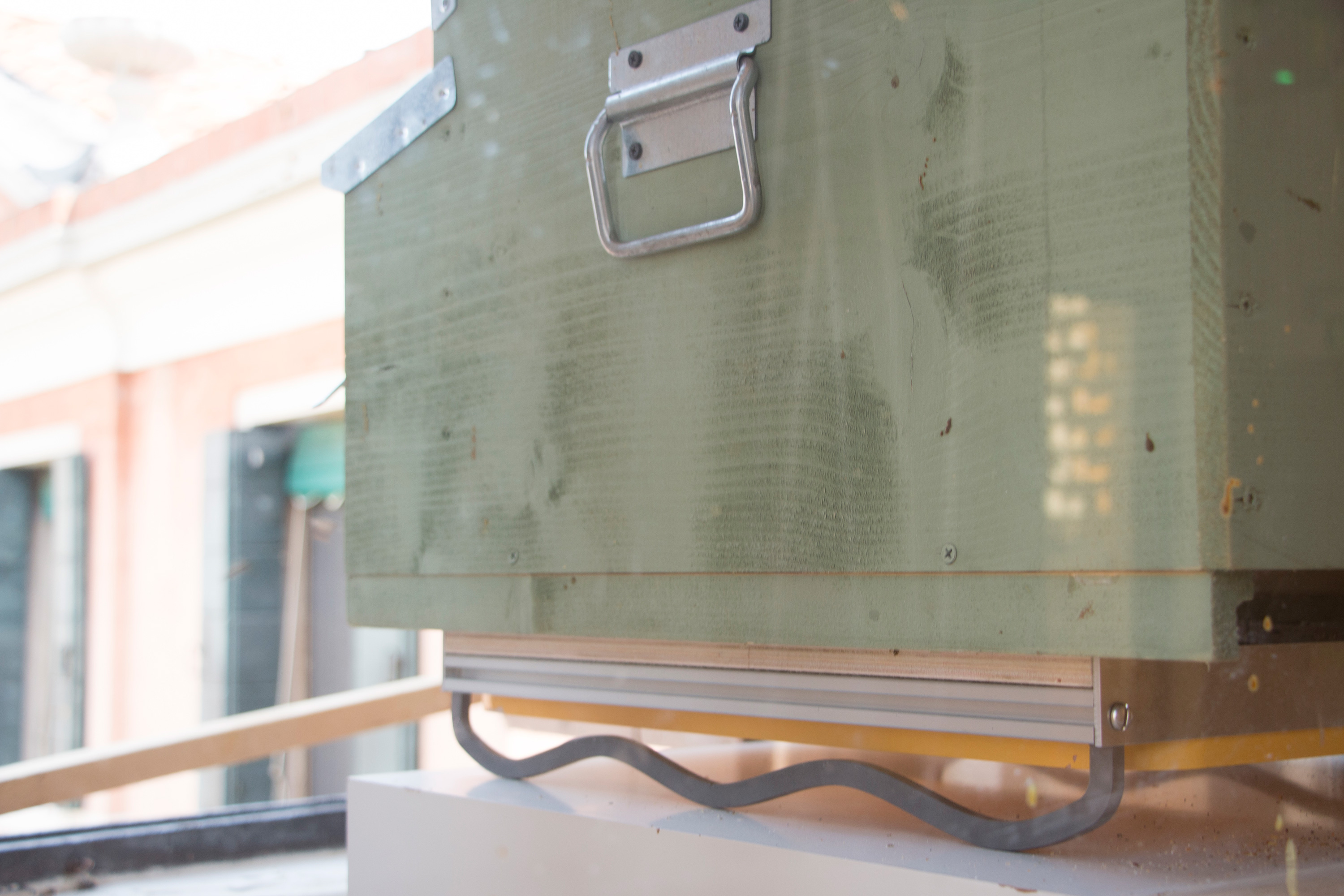The scientific term “holobiont” reframes plants and animals as more than isolated individuals. Instead, they are symbiotic networks consisting of the interactions between hosts and their associated microorganisms. This could include bacteria in the gut, or in the soil.
Cities -- from Brooklyn to Sydney to Venice -- are no different. They are built for humans, cars and boats, but they host trillions of other invisible residents whose lives are intertwined with our own. To understand which microbiological residents live where, we gathered samples from each location. We turned to citizen scientists to gather this material for us: the honeybees.
As bees traverse the city, they come into contact with a vast array of microbiological material which ends up as “bee debris” in the collection tray at the bottom of the hive. Gathering this material from the tray, we’ve run it through advanced metagenomic sequencing to identify local microorganisms, and used the data to generate the video visualizations of the microbial world.
Cities -- from Brooklyn to Sydney to Venice -- are no different. They are built for humans, cars and boats, but they host trillions of other invisible residents whose lives are intertwined with our own. To understand which microbiological residents live where, we gathered samples from each location. We turned to citizen scientists to gather this material for us: the honeybees.
As bees traverse the city, they come into contact with a vast array of microbiological material which ends up as “bee debris” in the collection tray at the bottom of the hive. Gathering this material from the tray, we’ve run it through advanced metagenomic sequencing to identify local microorganisms, and used the data to generate the video visualizations of the microbial world.






Team: Kevin Slavin and Miguel Perez (Playful Systems Group at the MIT Media Lab), Dr. Elizabeth Henaff and Dr. Chris Mason (Mason Lab at Weil Cornel), Devora Najjar (The Cooper Union), Benjamin Berman (MIT), Chris Woebken (Research Affiliate at the MIT Media Lab), Regina Flores Mir (Parsons School of Design), local beekeepers in Tokyo, Venice, Melbourne, Sydney, Chicago, Brooklyn and Queens.
This project has been presented at Palazzo Mora for the Venice Biennale in May 2016, and at the Innovative Cities Forum
This project has been presented at Palazzo Mora for the Venice Biennale in May 2016, and at the Innovative Cities Forum